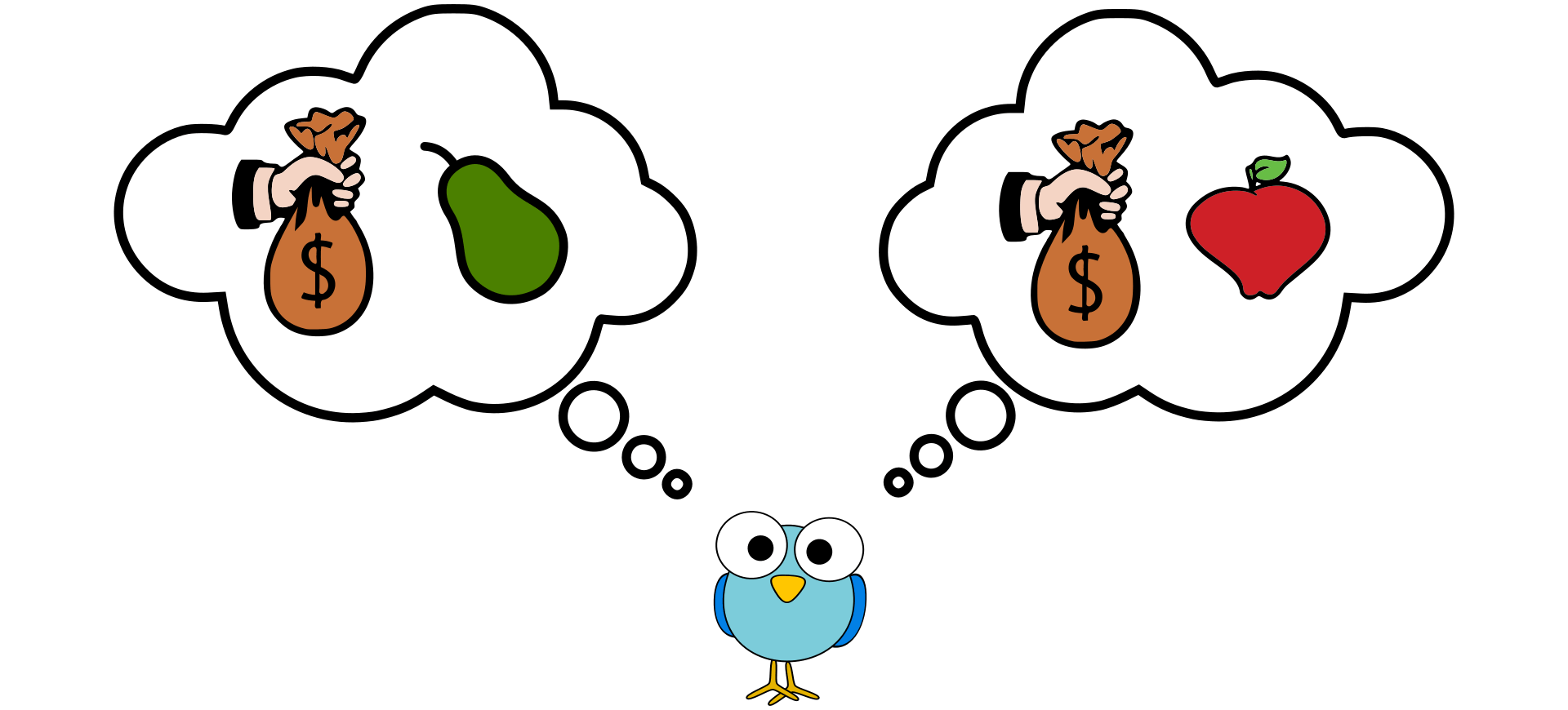What Is Risk?
An introduction to risk, in its many variations.
 Photo by Cristofer Jeschke on Unsplash
Photo by Cristofer Jeschke on Unsplash
In this article we're going to take the very general idea that risk is the:
"...uncertainty or volatility in outcome resulting from a decision or a course of action."
That's pretty abstract, so let's look at a more concrete example from the financial world.
If you have $1,000 to invest, you can make a decision to lend it to a company called Pear by buying a five-year bond. You expect to receive 1.125% interest every year for the next five years, and on the 5th anniversary, you expect to receive the $1,000 back. If that outcome could be achieved with 100% certainty, there is no risk in this investment decision. But we know there is a chance, no matter how small, that Pear won't be able to pay back the $1,000 in 5 years time. This creates uncertainty in the outcome of your investment decision, maybe you'll get $1,056 in 5 years time, or maybe you'll only get $56 if Pear can not repay their debt.
In other words, there is risk.
What if, instead of buying a Pear bond, you purchase an Apple bond? In 5 years the potential outcomes might still be the same $1,056 or $56, but you might recognise that there is a much greater probability that Apple will repay their bond. This makes Apple a less risky investment compared with Pear.
The greater the uncertainty in outcome, the greater the risk.
Risk and reward
Let's take a moment to revisit the hypothetical Pear and Apple bonds from the previous section. We believe that the Pear bonds have greater risk than the Apple bonds. If you had $1,000 to invest, which bond would you buy? The 5 year Pear bonds paying 1.125% interest or the 5 year Apple bonds paying 1.125% interest? All other things being equal, most people would buy the Apple bonds. However, Pear still needs to sell their bonds, they can't force people to buy them, so their only option is to increase the interest they pay to make it more attractive to potential investors.
Now imagine you have a choice between buying an Apple bond that pays 1.125% or a Pear bond that pays 3%. Which one would you buy? The risk-averse might prefer the Apple bond, while those with a greater appetite for risk might prefer the Pear bond. It all depends on your own personal appetite for risk and your assessment of the relative riskiness of the two bonds.
 Figure 2
Figure 2
One thing is for certain; if you are going to take on more risk, you would expect to be paid more for doing so. After all, why would anyone take more risk if they didn't get paid for it?
No-risk means no reward
If you are going to take on risk, you should expect to receive a reward. No one would argue against that. The converse is also true, you shouldn't expect to receive a reward unless you take some risk. Let's think about that for a moment, and let it sink in. You can only get a reward if you are prepared to take some risk.
If someone or something is promising you a reward, then you must be taking a risk. They may tell you it's safe, they may tell you everyone else is doing it, but there will always be some risk involved. How can I be so certain? Simple. There are plenty of financial institutions, private equity firms, and hedge funds in this world filled with really smart people. If there really was a way to earn a reward without taking any risk, you can bet they would know about it long before you were given a chance to invest. With all that institutional money crowded into this amazing "no-risk" trade, supply and demand would eventually push the rewards down to zero.
Different types of risk
When it comes to looking at the risk of financial investment decisions, the risks can be generally categorised as one of four types. We'll look at each risk in greater detail in future articles, but for now it's sufficient to know that they exist, and the idea of risk isn't just one dimensional.
Credit risk
Credit risk is the risk of someone not paying you when they are supposed to. This comes up in many different ways. You could buy a bond, and then you would risk the bond issuer not paying you when they said they would. You could keep your money in a bank, but the bank might go bankrupt. You might keep your assets at a custodian, but the custodian might not be able to return those assets to you when you ask. Basically, whenever you transfer control of your assets to someone else, with an expectation that they will return your assets in the future, you are taking on credit risk.
 Figure 3
Figure 3
Market risk
Market risk is the risk of your investments changing in value because of changes in currency or interest rates. Essentially this is the risk that arises from changes in financial market prices.
For instance, if you are a US investor and you buy a UK Government bond, you are exposed to the exchange rate between USD and GBP. If GBP weakens (USD strengthens), the price of the UK government bond, expressed in USD, will fall.
What if, as a US investor, you bought a US Government bond instead? Okay, you are no longer exposed to changes in currencies, but you are still exposed to changes in interest rates. Let's imagine you buy a US Treasury that pays 0.70% interest, but after you buy it the Federal Reserve unexpectedly puts interest rates up by 0.25%. This will make the price of your bond fall. To see why, just imagine what you would do if you were an investor and had the choice between two equivalent bonds, one paying 0.70% interest, and one paying 0.95% interest. You would always buy the higher yielding bond, no questions asked. Hence, the seller will have to lower the price of their 0.70% bond to make it more attractive. When interest rates go up, the price of bonds go down.
 Figure 4
Figure 4
Liquidity risk
Liquidity risk can mean two different things, depending upon if you are an investor, or if you are a borrower.
If you are an investor, liquidity risk is the risk you run by not being able to exit your investments in a short time frame without losing money. If your investment isn't very liquid, i.e. there isn't a queue of people lining up to buy it, you will have to substantially discount the price to sell it quickly.
If you are a borrower, liquidity risk refers to your ability to meet your upcoming financial obligations. It crops up if you are borrowing money for a short period of time to pay for assets that only mature or pay back much later. This type of liquidity risk is slightly less relevant to the readers of this article, but it should be noted that the Great Recession started as a liquidity crisis caused by companies that borrowed short term and invested long term. They didn't think they were taking a risk because they believed they could always refinance themselves (spoiler alert – they couldn't).
 Figure 5
Figure 5
Operational risk
Operational risk is perhaps the most overlooked risk, but is also the one risk that can dramatically impact your investment without any warning. It is a bit of an umbrella risk and refers to the potential losses that arise from operational weaknesses including inadequate systems, faulty controls, human error, and fraud etc. The unique thing about operational risk is that this is the one risk you are forced to take without being paid for doing so. If you could, you would choose to eliminate all of your operational risk. Would you choose to use a flaky computer system to manage your investments or a robust and reliable one?
 Figure 6
Figure 6
Conclusion
In this article we introduced the simple (and perhaps obvious) idea that every decision carries with it some form of risk. We see that financial risk is not purely one-dimensional, it has many different components. And finally we understood the amount of risk a decision carries is often related to the potential rewards that might be earned. No risk, no reward.